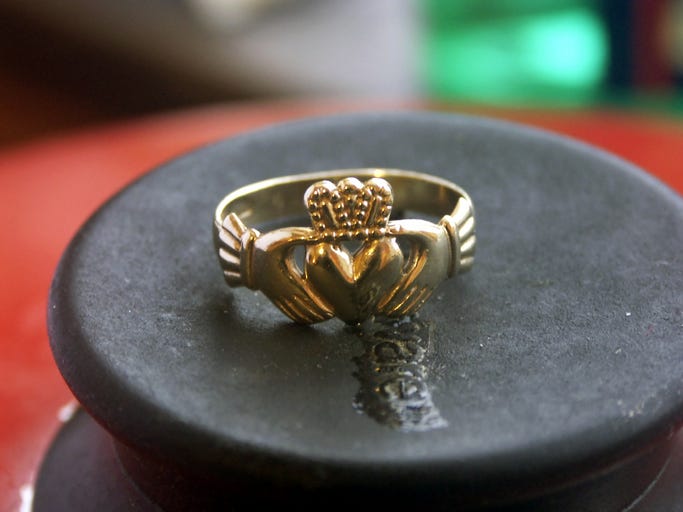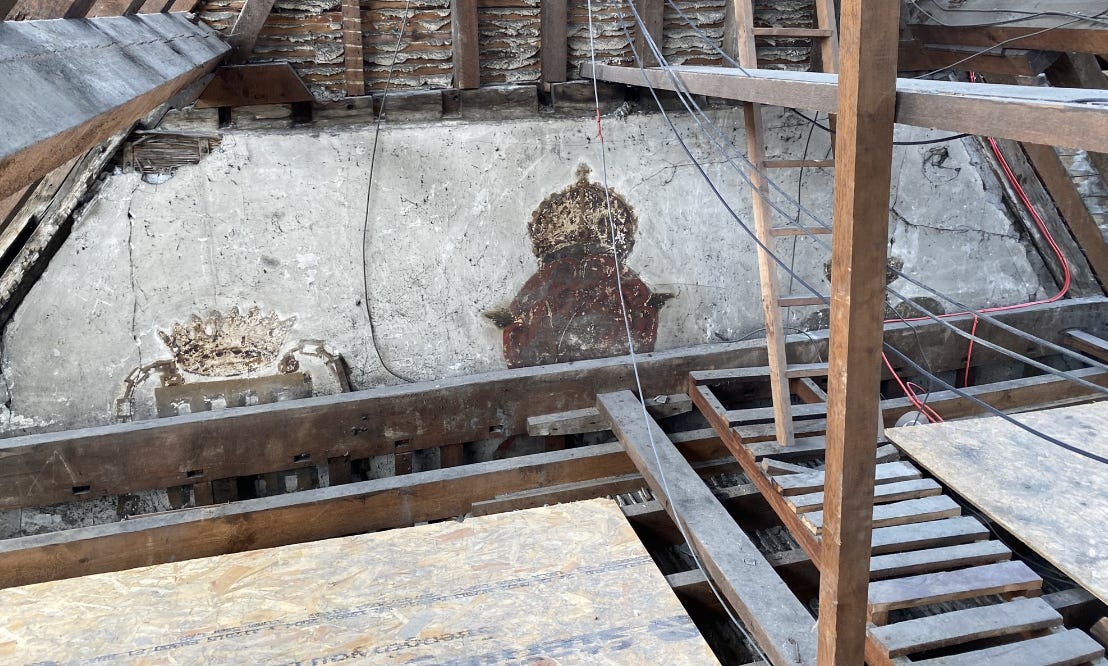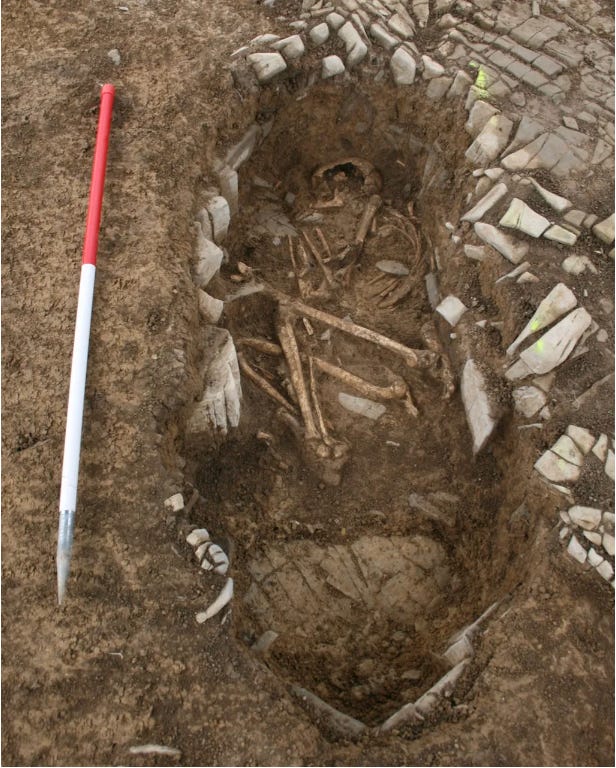Unruly History in the News #47
The secret connection between Claddagh rings and piracy, the man who stalked Queen Victoria, and a little-known satirical magazine made by a man hiding from the Nazis
Hi everyone,
Hope you’ve all had a lovely week—I have been busy trying to settle back into “life as usual” after the holidays.
Thank you to everyone who filled out the Unruly Figures reader survey! It sparked some fun new ideas for directions to head in 2024. The winner of the $50 gift card is Maude! I’ve sent you an email for more information.
Now for history being unruly in the news…
A Keith Haring artwork that was deliberately left “unfinished” as a statement on the AIDS epidemic has been “finished” using AI, sparking controversy and fury. The blank canvas was meant to represent the loss of such a large part of the LGBT+ community; much of Haring’s work criticized the government’s deliberate inattention to the AIDS epidemic.
A bunch of news about clothing and accessories this week...
The Irish Claddagh ring is a well-known symbol, but its history is less well-known. It involves an Irish man kidnapped by pirates and enslaved by a goldsmith, plus a whole lot of myth.

A Claddagh ring. The design descends from fede rings. Richard Joyce is credited with adding the crown. Source: Getty Images. Found in a Victorian dress pocket, some codes once thought unbreakable have finally been broken. The key was in weather codes from 1802.
What do you know about the history of underwear?
The world’s oldest saddle was just found in China. Saddles don’t usually survive the ravages of time since they’re made of degradable material, so it’s exciting that one has been found connected with an ancient horsewoman buried thousands of years ago.
Are you familiar with the man who stalked Queen Victoria? He was held in an asylum for a decade, raising debates about communal safety versus personal autonomy in Victorian England.
The Palace of Aigai, where Alexander the Great was crowned, has been reopened to the public after 16 years of renovations.
In art news…
Tudor wall paintings were discovered in an attic at the University of Cambridge. The artworks haven’t been seen in almost 300 years.

The three crowns were found in an attic at Christ’s College in Cambridge. They were used to legitimize Henry VII’s reign. Source: Tobit Curteis Associates LLP. Francesco Pesellino, a Renaissance artist who was beloved in his lifetime and then forgotten, is being rediscovered. A show dedicated to him is going up at the National Gallery.
A proposal to install contemporary stained glass windows at Notre Dame has inspired serious backlash. Strangely, the stained glass windows that were present when a fire burned through the building in 2019 are in good condition and don’t need replacing.
Update on the 1,700 pieces of missing artwork from British museums: The list has been kept quiet until now, but freedom of information requests have revealed some details. Missing items include a drawing of Queen Victoria, a cannonball, and a sculpture by Auguste Rodin worth nearly $4 million.
Tomorrow is MLK Jr. Day, so here’s an article about an oft-forgotten scene from his life: the time his home was bombed and how he reacted to it.
And, the story of when he once considered a presidential run.
What happened to the ancient practice of communal sleeping?
Four historical figures you might not know had a physical disability. The stories of disabled people are often erased from history, so these stories are more important to tell than ever.
In archaeological news…
The strange story of the looted grave of Nicholas Copernicus.
A network of 2,500-year-old cities have been found in the Amazon using lidar technology. They stretch for 100 square miles.
An Iron Age moat was discovered in a parking lot in Jerusalem.
New dinosaur alert: A cousin of the tyrannosaurus rex has been discovered. Remains were found in the 1980s but were long thought to be just a young t-rex.
A 4,000-year-old Egyptian tomb was discovered in Saqqara. It included a child and an older person wearing a colorful mask.
In Italy, a 1,600-year-old Roman imperial cult temple was uncovered in a parking lot.
Construction workers in Toronto have found an Indigenous burial ground. About 700 years old, it was paved over as the city expanded.
A 1,400-year-old cemetery was found in Wales. The graves contain “strangely positioned skeletons and evidence of ritual feasting,” which presents more questions than it answers.
Since the Victorian Era, folks have been smoking to relax. Starting in 2000, rates of smoking were steadily declining, but new evidence shows that people aged 18-24 picked up smoking at a much higher rate during the anxious early months of the COVID-19 pandemic.
Is ancient graffiti in danger of being lost to the ravages of wind and time?
While hiding from the Nazis, a Jewish man created a satirical magazine with 95 issues. They haven’t been widely shared, but now they’re going on display in Berlin.
Last week, artwork looted by the Nazis was returned to Jewish heirs. This week, a US court ruled that a museum in Madrid can keep a painting by Camille Pissarro that was stolen from a Jewish collector by the Nazis. They have a right to appeal.
In 1690, a huge fire in Builth, Wales devastated the town but—miraculously—no one died. In fact, the fire might have saved lives in the long run. A new theory proposes that the fire actually drove Plague-carrying rats out of the city, saving the town from an outbreak.
The search for the truth behind Marco Polo’s 14th-century bestseller has been going on basically since it was first published. Did he really make it to China? Did he really see a unicorn? The philologists researching have theories, and maybe answers.






